 |
 |
 |
| |
The Use of All-Oral Regimens for Treatment of Chronic Hepatitis C Coupled with HCV Birth Cohort Screening is Highly Cost-Effective
|
| |
| |
"Aim: Determine the health and economic impact of a one-time screening for HCV in the era of highly effective anti-HCV regimens.......Conclusions: Availability of highly efficacious and well tolerated all-oral regimens for CHC patients with excellent tolerability makes BCS (Birth Cohort Screening) of the baby boomers highly cost-effective with great health and economic benefits at the population level."
Reported by Jules Levin
AASLD 2014 Nov7-11 Boston
Zobair M. Younossi1,3,4, Mendel E. Singer2, Maria Stepanova1,3, Brian Lam1, Fatema Nader1,3, Linda Henry1,3, Sharon Hunt1,4
1Center for Liver Diseases, Inova Fairfax Hospital. Falls Church, VA, USA.
2Case Western Reserve University, Department of Epidemiology and Biostatistics, Cleveland, Ohio, USA
3Department of Medicine, Inova Fairfax Hospital. Falls Church, VA, USA.
4Betty & Guy Beatty Center for Integrated Research, Inova Health System, Falls Church, VA, USA.
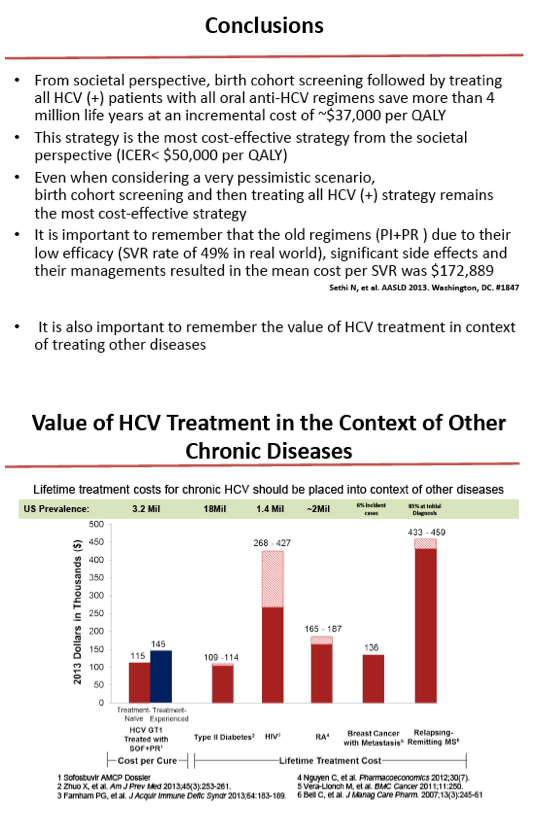
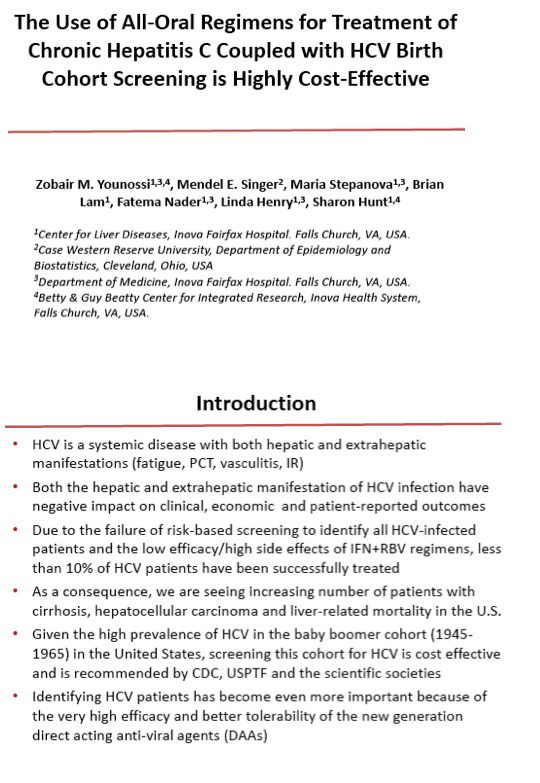
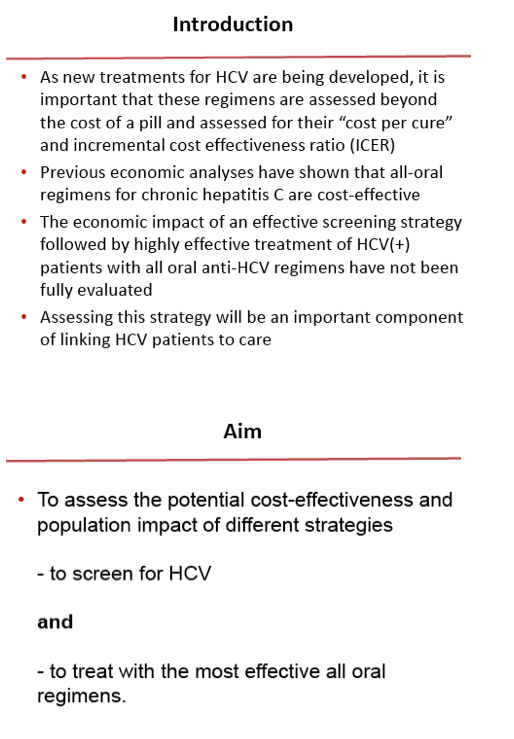
Program ABSTRACT:
CHC is associated with significant health and economic burden to the society. Although risk-based screening for HCV has been recommended and CDC recently expanded screening to those born between 1945-1965 (Birth Cohort Screening, BCS), the vast majority HCV infected individuals remain undiagnosed and untreated. This is especially important in the context of new anti-HCV therapy with greatly improved outcomes (high SVR and PRO improvement). Aim: Determine the health and economic impact of a one-time screening for HCV in the era of highly effective anti-HCV regimens. Methods: A decision analytic Markov model that simulated patients until death was used to compare four strategies for screening for CHC in people born 1945-1965 without known CHC, excluding 2% ineligible for oral therapy: (1) Risk-based screening with treatment based stage of liver disease (RBS), (2) Risk-based screening and treat all without staging (RBA), (3) Birth Cohort Screening with treatment based on the stage of liver disease (BCSS), (4) Birth Cohort Screening and treat all without staging (BCSA). Treatment based on staging implied treatment for fibrosis stages F2-F4 with subsequent staging every 5 years for F0-F2. Parameters were taken from the literature. Treatment in BCS was phased in over 5 years from initiation of screening program. Oral therapy was assumed to have 98% SVR and cost of $1,000/day for 12 weeks, with no disutility of treatment since quality of life is better on treatment. Knowledge of CHC had a disutility of .02. Drug costs were based on cost of acquisition. Effectiveness was measured in quality-adjusted life years (QALYs) and disease progression. Results were provided per person with previously unknown CHC, and projections to population screened. Results: About 100 million people would be screened, 1.4 million with unknown CHC. BCSA was the most cost effective strategy, with an ICER of $32,263/QALY. Compared to RBS strategy, BCSA strategy cost an extra $123 billion and produced an additional 22.9 million QALYs. Conclusions: Availability of highly efficacious and well tolerated all-oral regimens for CHC patients with excellent tolerability makes BCS of the baby boomers highly cost-effective with great health and economic benefits at the population level.
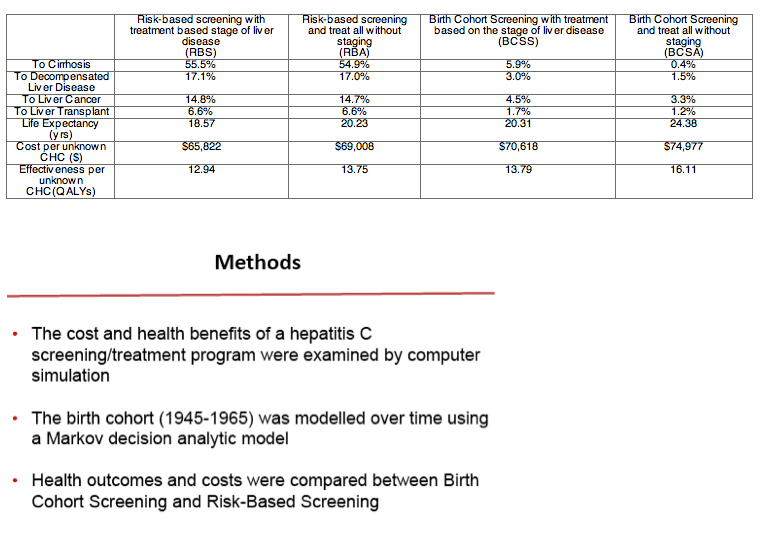
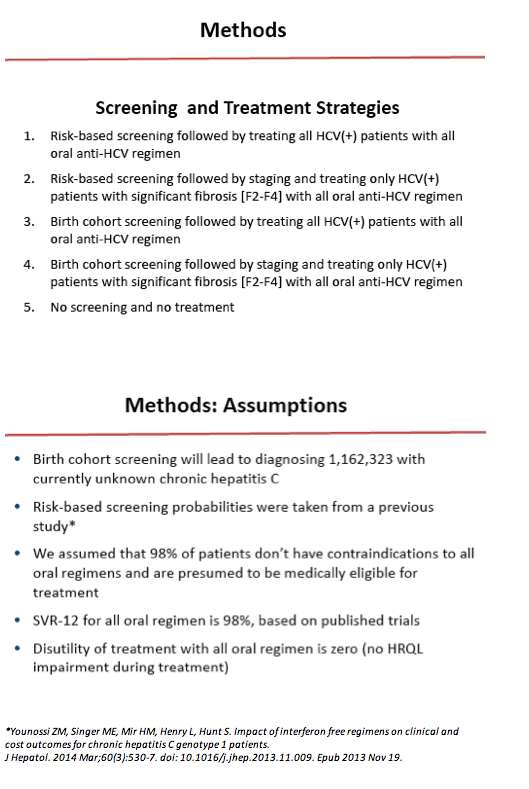
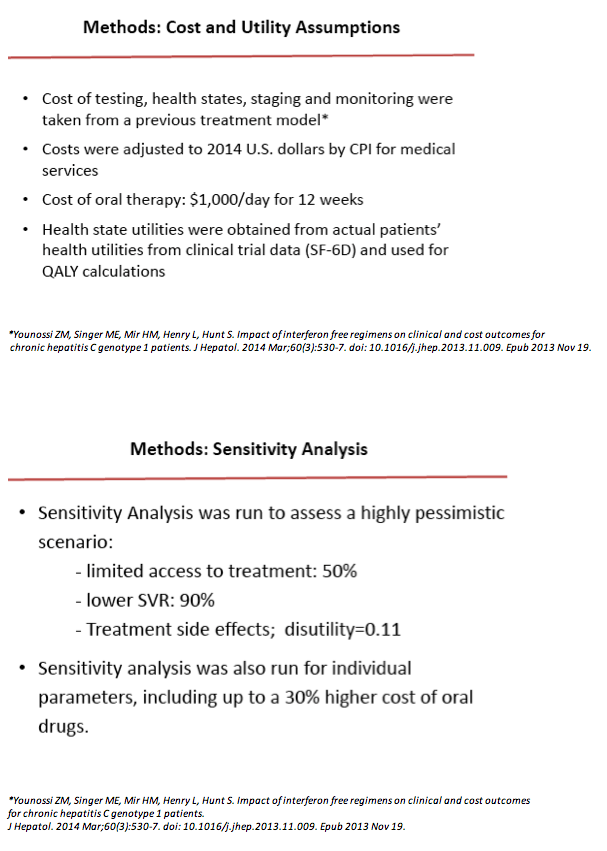
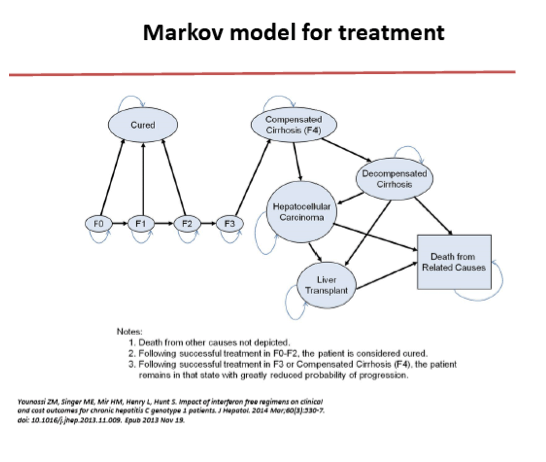
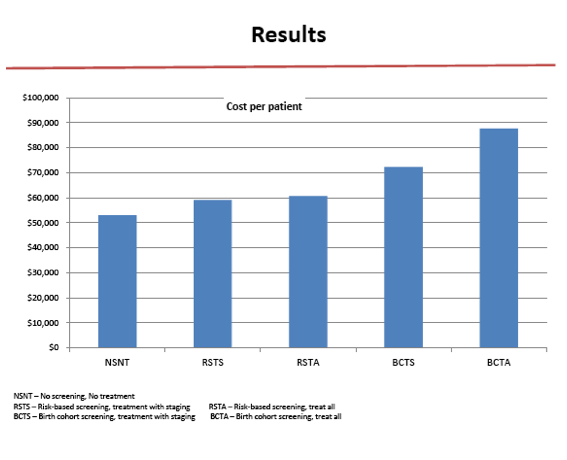
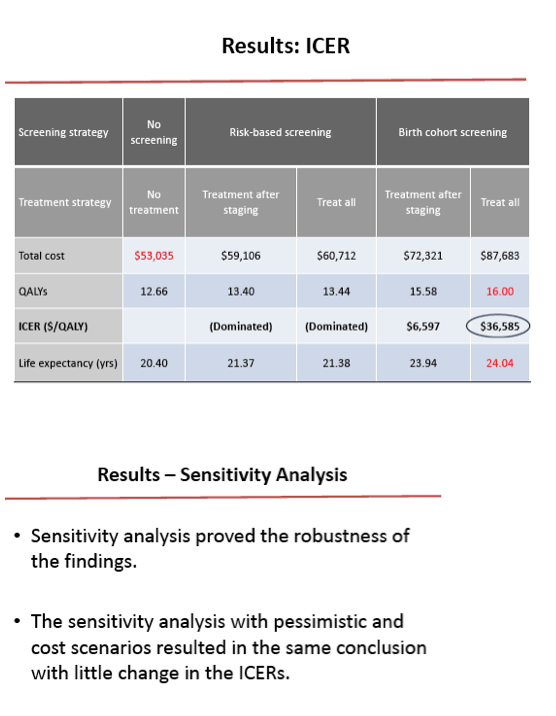
|
| |
|
 |
 |
|
|